Australian Tropical Rainforest Plants - Online edition
Jasminum elongatum (Bergius) Willd.


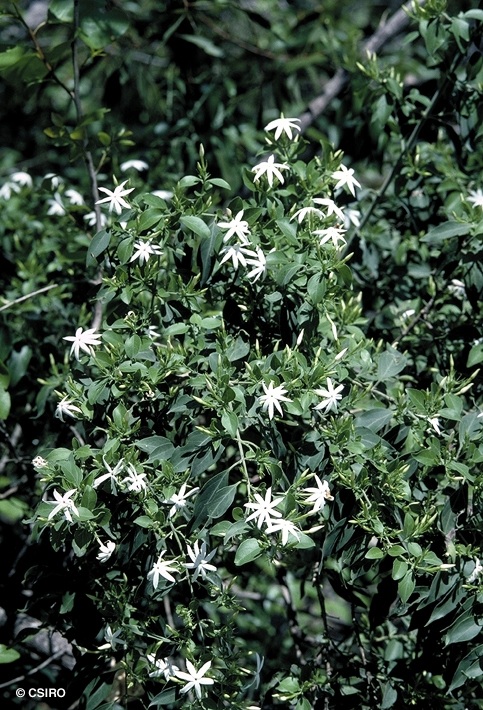
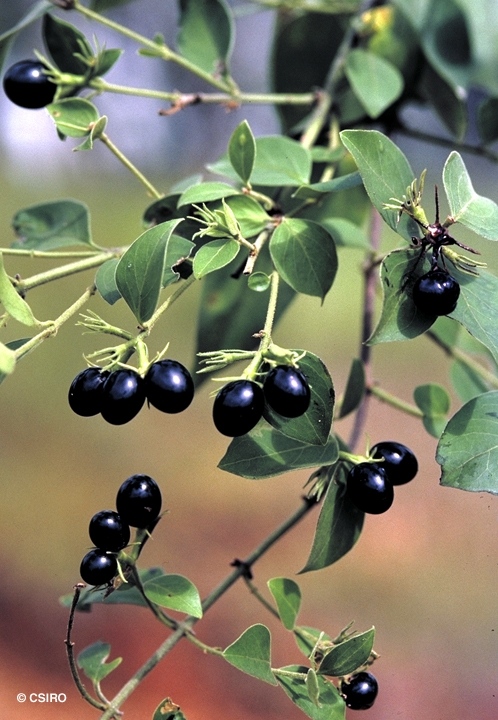
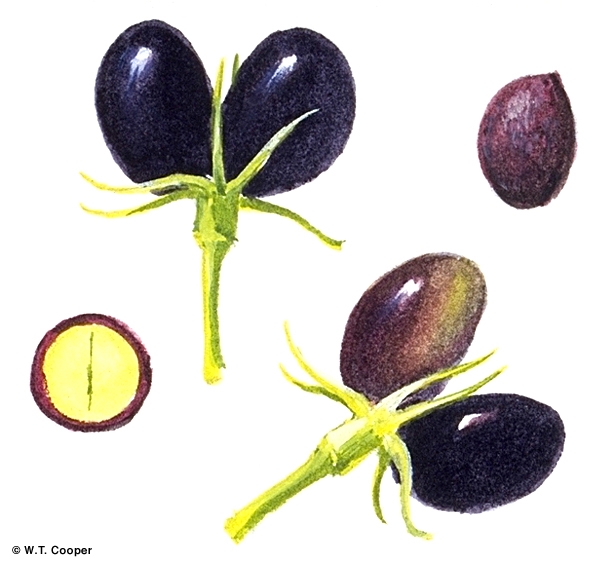
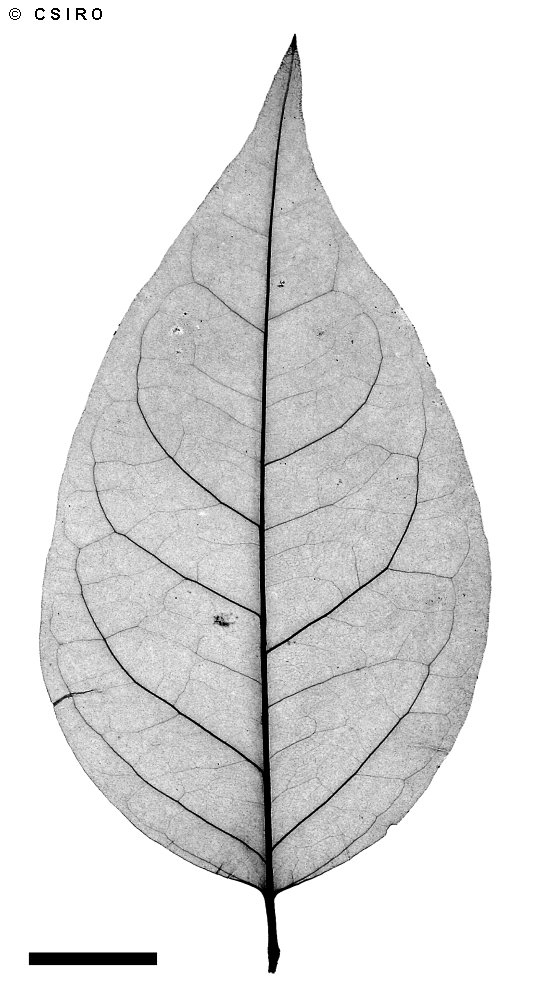


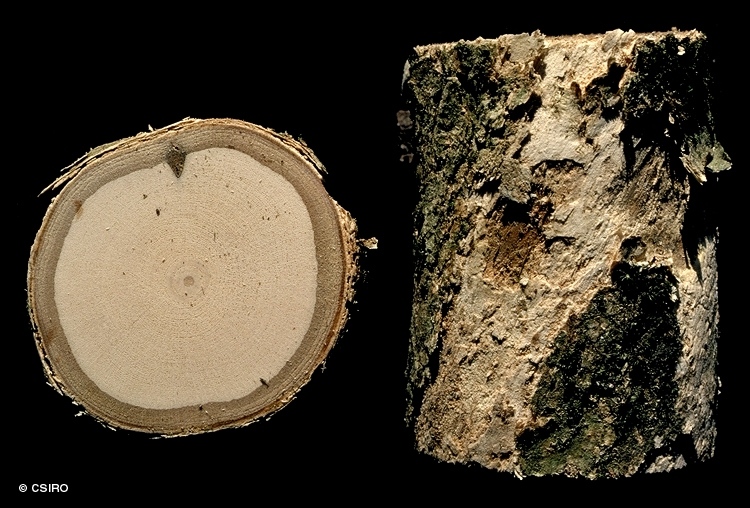

Willdenow, C.L. von (1797) Species Plantarum Edn. 4 1(1): 37.
Jasmine, Native; Native Jasmine
Vine stem diameters to 4 cm recorded. Usually grows as a vine but can flower and fruit as a shrub.
Leaf blades +/- ovate, about 3-12 x 1.9-5 cm, fairly uniform in size except for the smaller pair subtending the inflorescence. Petioles about 0.5-1.4 cm long. Pulvinus or articulation about half way along the petiole or about 2-3 mm from the base of the petiole. Petiole grooved on the upper surface above the pulvinus or articulation.
Flowers very strongly perfumed. Calyx lobes (usually five to seven) each about 6-7 mm long, fused to form a short tube at the base. Corolla usually 7-lobed (sometimes five to eight) each lobe about 6-16 mm long, corolla tube about 12-20 mm long. Anthers linear, about 4-5 mm long, filaments attached to the middle of the corolla tube. Style about 11-20 mm long, stigma cylindrical, about 5-6 mm long but 2-lobed at the apex.
Fruits ellipsoid, about 7-10 x 5-7 mm.
Cataphylls, about 4-6, produced before the first true leaves. Cataphylls initially alternate but the final pair +/- opposite. At the tenth leaf stage: leaf blade +/- ovate with an articulation or pulvinus about halfway along the petiole. Terminal bud, stem and petiole clothed in short pale hairs. Seed germination time 16 to 32 days.
Occurs in WA, NT, CYP and NEQ. Altitudinal range from near sea level to 200 m. Grows in riparian vegetation, monsoon forest and vine thickets particularly in forests close to the sea. Also occurs in China, through SE Asia to Indonesia and New Guinea.
This species has potential in horticulture because of its somewhat shrubby habit, grey-green foliage and large white perfumed flowers.





